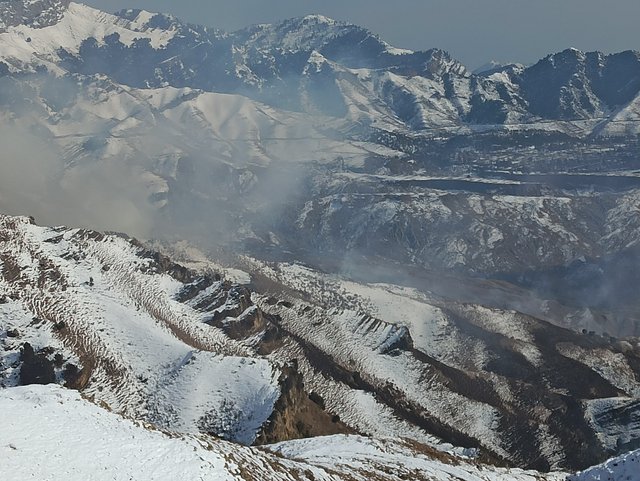Exploring The Beauty
Snow-covered mountains are a majestic sight to behold. When mountains are covered in a layer of snow, it creates a stunning and serene landscape. Here's some information about snow-covered mountains:
Formation: Snow forms when atmospheric moisture freezes in the cold temperatures found at high elevations. The moisture can come from snowfall, freezing fog, or frost deposition. As the snow accumulates on the mountains, it creates a beautiful white blanket.
Visual Appeal: Snow-capped mountains offer a picturesque view, with their white peaks contrasting against the surrounding landscape. The pristine white snow provides a sense of purity and tranquility.
Recreation and Sports: Snow-covered mountains attract outdoor enthusiasts and adventurers, offering opportunities for various winter sports such as skiing, snowboarding, snowshoeing, and mountaineering. The presence of snow allows for thrilling activities and recreational opportunities in these mountainous regions.
Hydrological Importance: Snow in mountains plays a crucial role in the hydrological cycle. As the snow melts, it slowly releases water downstream, supplying rivers, lakes, and reservoirs with freshwater. This gradual release helps regulate water flow, preventing rapid runoff and reducing the risk of flooding.
Climate Impact: Snow-covered mountains can significantly affect local and regional climates. The white snow reflects sunlight, which contributes to lower surface temperatures in the surrounding areas. It can also influence precipitation patterns, as mountains can enhance orographic lifting, leading to increased rainfall or snowfall on the windward side.
Ecosystems: Snow-covered mountains are home to unique ecosystems that are adapted to cold and harsh conditions. Alpine flora and fauna have adapted strategies to survive in extreme temperatures, limited growing seasons, and low oxygen levels found at higher elevations.
Environmental Indicators: The presence and extent of snow cover on mountains can serve as an indicator of climate change. Reductions in snowfall or earlier melting can have implications for water resources, ecology, and even tourism in mountainous regions.
Overall, snow-covered mountains are not only visually captivating but also play significant roles in various aspects of our environment and human activities.
